✍️ “Eagerly, I take off my dress and slide into my water shoes. Finally! After two long years of mental illness recovery, I have made it back to the intensely blue waters that channel my Moana-energy like no other: the Mediterranean. Impatiently, I stumble over the rocky terrain. SPLASH! The warm Adriatic waters avidly greet my skin. With my face already half underwater, I suddenly notice a strong taste in my mouth. So much… salt? Surprised, I lift my head and try to open my eyes. Ouch, it stings! Is the Adriatic that much saltier than the Western Mediterranean regions? But… why?
Put on your goggles, we’re finding out!
📍Croatia | 👅 Taste | Salt Sensations
 Croatian Crave
Croatian Crave 
When I first arrived in Dubrovnik, Croatia, back in 2019, I was welcomed by a cab driver with the legendary words: ‘First time in Croatia? Oh, but you will fall in love! And return!’ Though skeptical during that first taxi ride, I have to give it to him: I did fall in love, and return. Not for its cuisine, friendly waiters, or affordable pricing (insert sarcastic voice), but for one thing in particular: its islands. They have a pull so strong I swear I found my way back swimming – like a turtle that uses the magnetic field of the earth to guide himself home.
Croatia, often dubbed “the land of a thousand islands,” has a very rich aquaculture. Although only 49 islands are inhabited (such as Hvar, Brac, Vis, and Mljet), it is possible to explore the rest with a sailboat, speedboat, cruise, ferry, kayak, or other tour. The islands are lined with rocky beaches, coves, caves, and cliff walls bathing in the crystal-clear waters of the Adriatic Sea: the northernmost arm of the Mediterranean separating the Italian from the Balkan Peninsula. The sea is noted for its spectacular blue-green hues, which make it appear different from its Spanish and French Mediterranean counterparts.
🧂Increasing Salinity 🧂
Yet, if you ask me, you don’t need your eyes to know you’re in Adriatic waters—your tongue alone will ‘taste’ the difference! The salinity level is high, especially in the Eastern and Southern parts, estimated at about 38.30 parts per thousand (i.e., 38.30 grams of salt dissolved in 1 kilogram of water). According to my research, this is due to a combination of factors.
Let’s get a little nerdy.
➡ ️ Firstly, the Adriatic is semi-enclosed and relatively protected from winds and currents, meaning there is limited fresh water inflow and water exchange with other bodies of water, such as the Atlantic Ocean. Freshwater inflow has a diluting effect, so less inflow means higher salinity.
(Pssst… 🧑🏫 teacher Marie notes: the higher the amount of salt in 1L of water, the higher the concentration of that solution)
➡ Secondly, due to the increasing intensity of the climate, there is less rainfall, which further decreases the inflow of fresh water from rivers. Additionally, higher summer temperatures and elevated solar energy significantly promote evaporation (surface liquid turns into vapor, leaving behind salt). The Adriatic is particularly sensitive to this process because of its relatively large surface area and shallow depths. Poor sea!
In fact, the increasing salinity and temperature levels of the Adriatic are raising concerns among scientists, as they could severely threaten marine life.
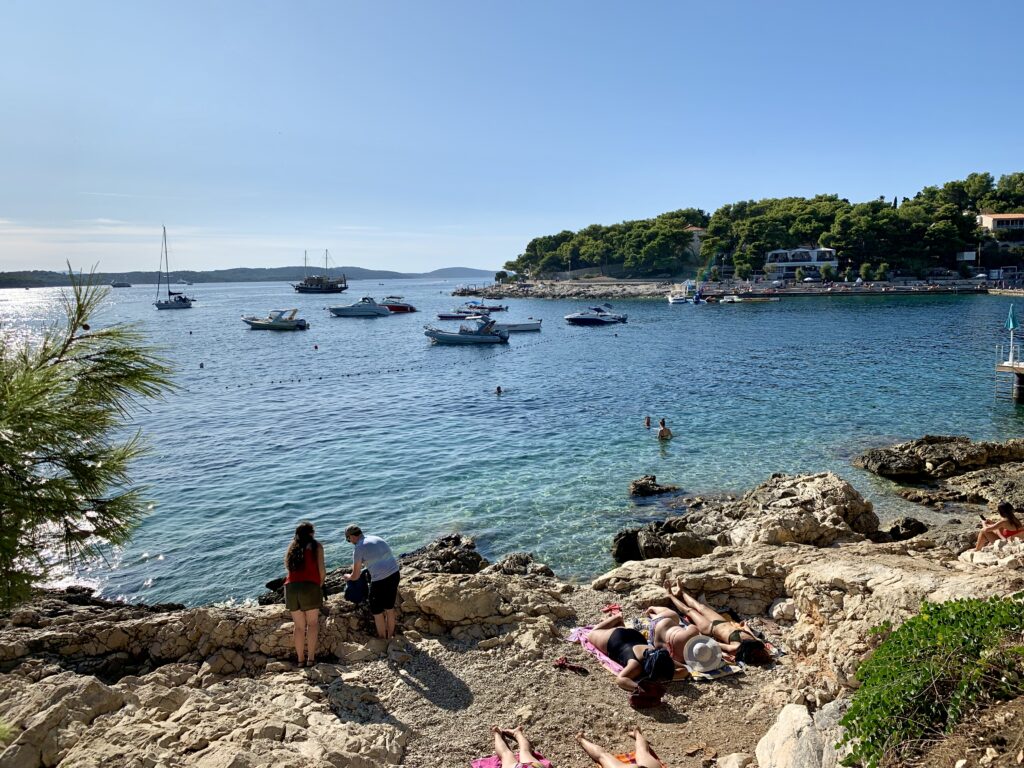
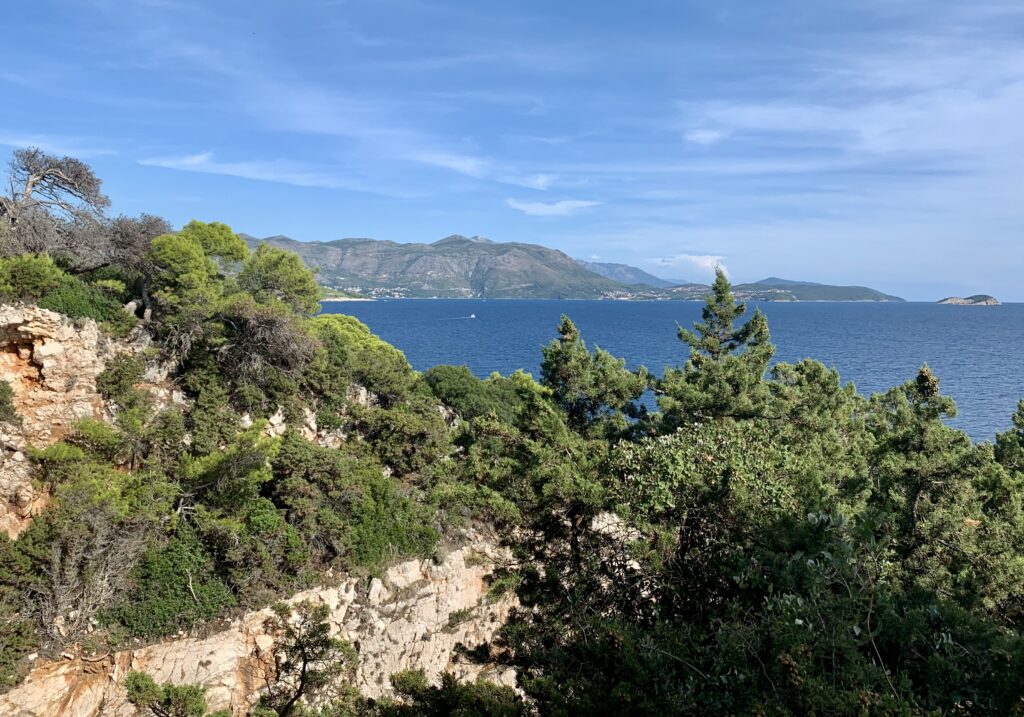
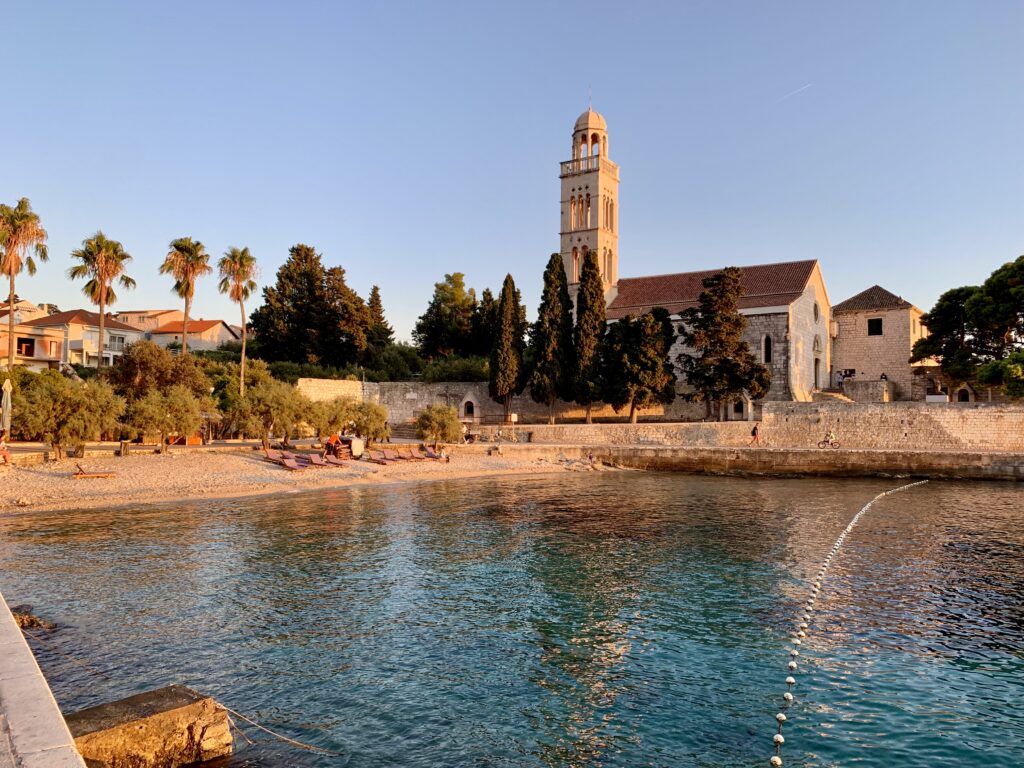
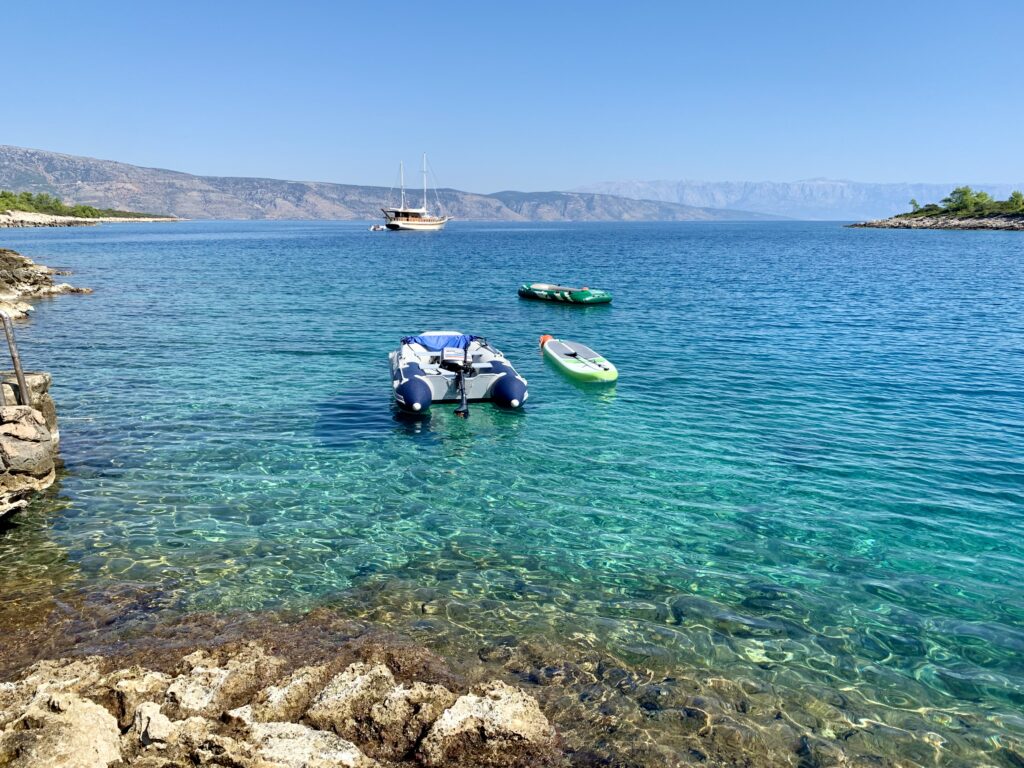
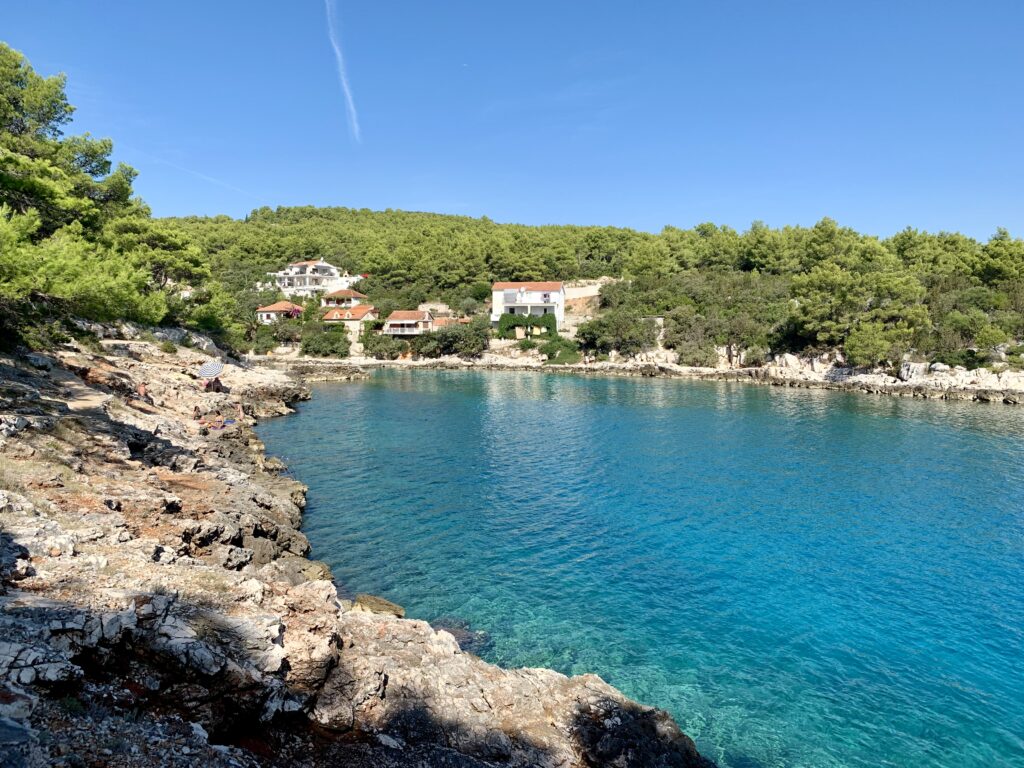
🪙Valuable Minerals 🪙
On a more positive note, the taste of the Adriatic waters is also influenced by the presence of special minerals, some of which are economically valuable and utilized in various industries. Scientific studies have shown that the Adriatic contains over 80 essential minerals and trace elements beneficial for human health. Examples include magnesium, bromine, calcium, potassium, and iodine. Moreover, the seabed in certain areas contains extensive salt deposits commonly known as rock salt (halite), whose extraction has been a significant economic activity in countries bordering the Adriatic.
Naturally, it is important to note that mineral composition can vary depending on the location and depth of the waters. This, in turn, influences how the water will taste to us and other fauna. Fortunately, the extraction and industrial use of these minerals have increasingly been subjected to regulations to protect the marine ecosystem and prevent over-exploitation.
👅 Salty Tongue 👅
So, what about that super-strong muscular organ in our mouths that brought me to write this article? Covered with thousands of taste buds, our tongues are excellent salt detectors. Contrary to what you might have been taught in school, salt receptors are found all over the tongue, not exclusively in one area. When these salt-sensitive receptors come into contact with salt, they activate specialized taste nerves, which subsequently carry the ‘taste information’ to the brain.
Interestingly, not all people taste salt the same way. Some are more sensitive to it, noticing salt in food that others don’t. It has even been suggested that your salt taste sensitivity is affected by your genes, with some gene variants heightening your salt perception!
So… next time you’re floating in salty waters, challenge yourself! Can you taste the difference between seas? And how sensitive to salt do you think you are? Let me know in the comments!
* Footnote: over the last few years, an increased influx has been measured from the saltier and nutrient-poor Ionean sea and other Middle-Eastern waters, contributing to the rising salinity levels.
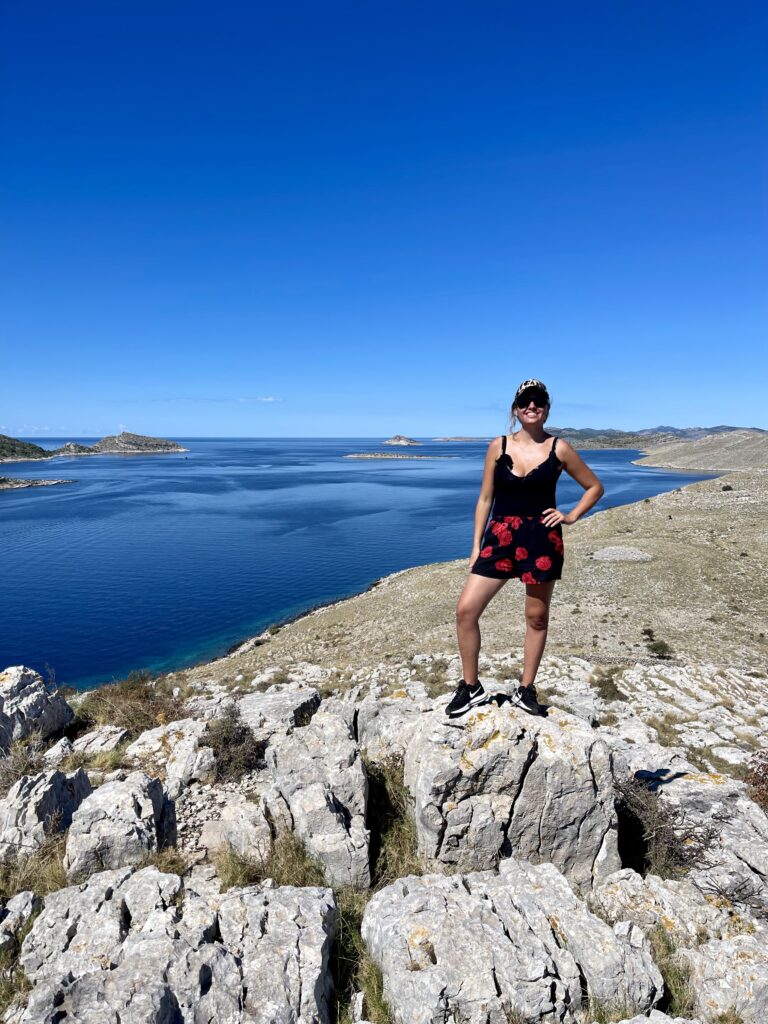
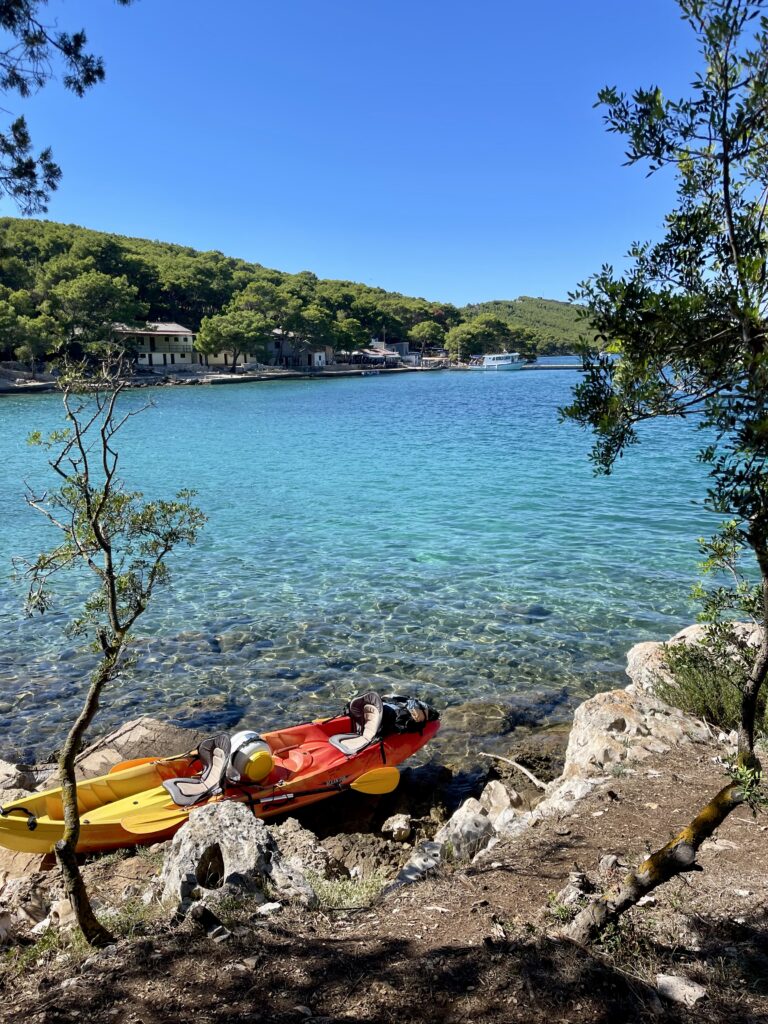
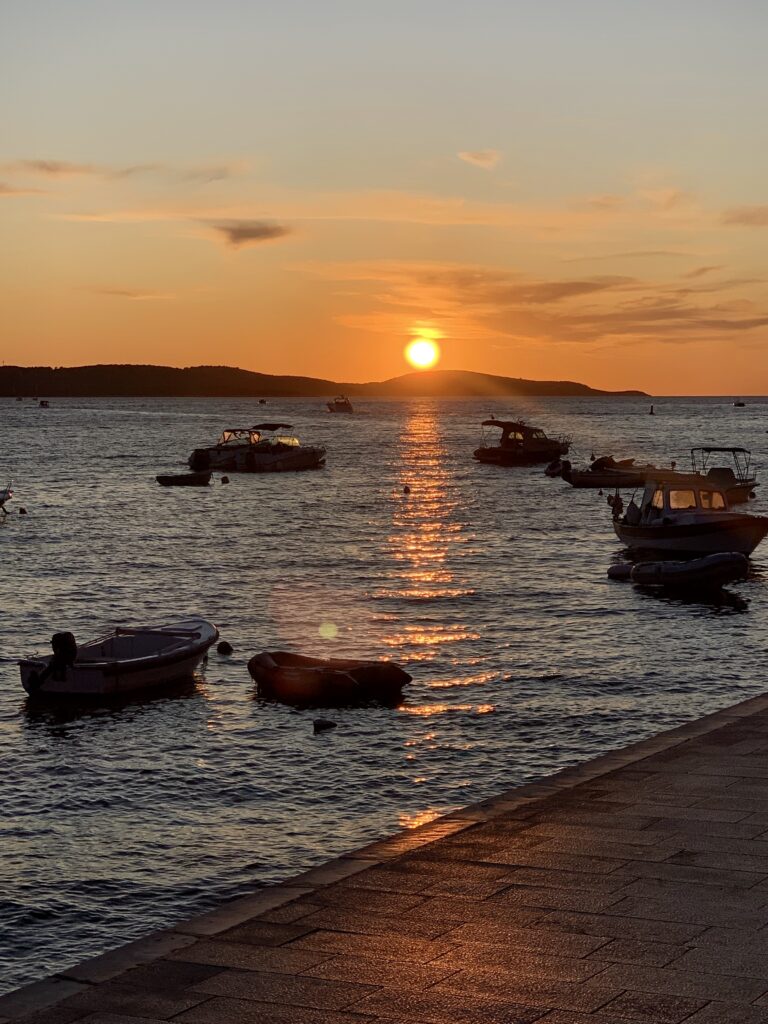


Practical Tips
1️⃣ As mentioned in the intro, Croatia has become very popular and is no longer the cheap Eastern-European country it once was. The Adriatic coasts of Slovenia, Montenegro and Albania may make for great budget-friendly alternatives – so check them out!
2️⃣ Don’t forget your water shoes! There are hardly any sandy beaches in Croatia and the water shoes help you not to sip and slide on the rocks. At least you’ll get back home relatively clean without sand all up in your intimate parts! 😉
3️⃣ If you’re fancying a little party, head over to Hvar island (with 2800 hours a year, the sunniest island of Croatia!) and take a taxi boat to the Carpe Diem Beach Club, built on its own little private island!
Accessibility Tips
Be careful entering the water where there are no stairs. The rocks can get very slippery… and cause nasty cuts!
🦽I remember both Dubrovnk & Hvar to be very hilly with lots of stairs. These 2 decisions may not be very wheelchair friendly. Try Zadar, Split or the island of Brac instead.
